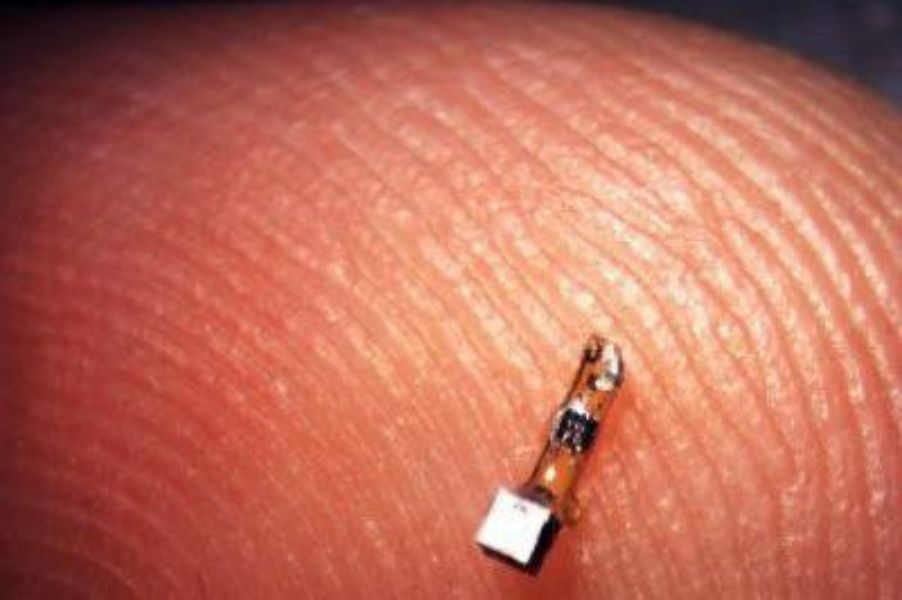
-
Published: 12 April 2023

Tiny implantable sensors that could be used to internally monitor the body without the need for wires have been created by engineers in the US.
EDITED BY | CHRISTIAN MEGAN
SCIENCE SECTION CJ NEWS
12 APRIL 2023
The devices, created by researchers at the University of California, Berkeley, could potentially treat disorders such as epilepsy or bladder control and in the future, control prosthetics. The sensors, around one millimetre in size and named neural dust, may also be used to monitor organs in real-time, as well as being used to stimulate nerves and muscles.
Ultrasound is used to both power the device and read out the measurements.
"I think the long-term prospects for neural dust are not only within nerves and the brain but much broader," said Michel Maharbiz, an associate professor of electrical engineering and computer sciences and one of the study's two main authors in the journal Neuron.
"Having access to in-body telemetry has never been possible because there has been no way to put something supertiny superdeep. But now I can take a speck of nothing and park it next to a nerve or organ, your GI tract or a muscle, and read out the data."
The team at Berkeley successfully trialled the sensors by implanting them in the muscles and peripheral nerves of rats. The sensor contains a piezoelectric crystal that converts ultrasound vibrations from outside the body into electricity to power a transistor that is in contact with a nerve or muscle fibre. A voltage spike in the fibre alters the circuit and the vibration of the crystal, which changes the echo detected by the ultrasound receiver, typically the same device that generates the vibrations.
The researchers believe the neural dust motes could work equally as well in the central nervous system and brain to control prosthetics. Whereas with today’s implantable electrodes that have to be connected to wires that pass through holes in the skull and typically degrade within one or two years, the wireless sensors could be sealed in, avoiding infection and unwanted movement of the electrodes.
"The original goal of the neural dust project was to imagine the next generation of brain-machine interfaces, and to make it a viable clinical technology," said Ryan Neely, a neuroscience graduate student.
"If a paraplegic wants to control a computer or a robotic arm, you would just implant this electrode in the brain and it would last essentially a lifetime."
Plans are in place to make the device even smaller, find more biocompatible materials and improve the surface transceiver that sends and receives the ultrasounds. In addition, the team is working to expand the motes’ ability to detect non-electrical signals, such as oxygen or hormone levels.
Earlier this week it was announced that Galvani Bioelectronics will develop a bioelectronic device to monitor nerve signals in the body. Google's parent company Alphabet and GlaxoSmithKline have teamed up to create the company that will research, develop and commercialise bioelectronics medicines.
{source}<script async src="https://pagead2.googlesyndication.com/pagead/js/adsbygoogle.js?client=ca-pub-4474625449481215"
crossorigin="anonymous"></script>
<!-- moss test ad -->
<ins class="adsbygoogle"
style="display:block"
data-ad-client="ca-pub-4474625449481215"
data-ad-slot="6499882985"
data-ad-format="auto"
data-full-width-responsive="true"></ins>
<script>
(adsbygoogle = window.adsbygoogle || []).push({});
</script>{/source}
